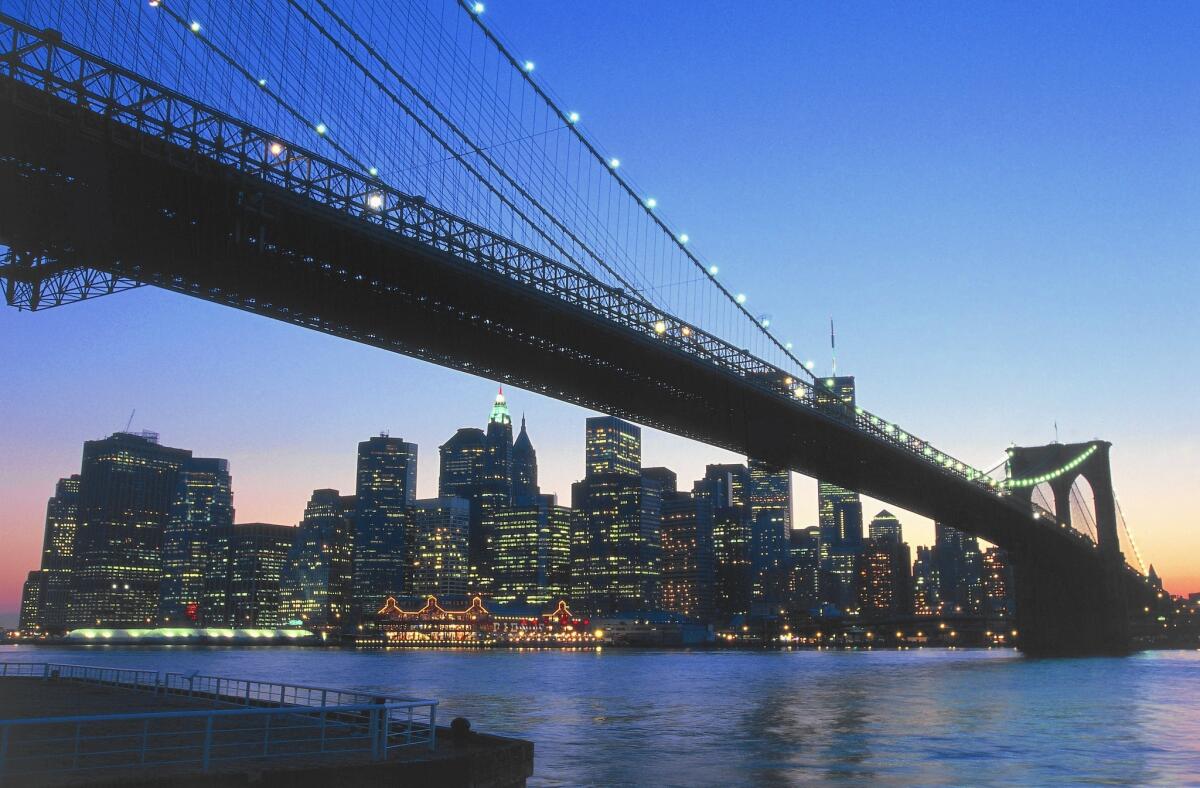Sentimental look at New York bars skips darker side

With all the people yelling and screaming and rushing from here to there, it is easy to miss the sentimental side of the city of New York. But there is one â and readers can catch a glimpse of it in Richard Ocejoâs book, âUpscaling Downtown: From Bowery Saloons to Cocktail Bars in New York City.â
Ocejo is a sociologist who downed a cold beer at Milanoâs, an old-style New York bar, and was inspired to examine the role that drinking establishments have played in the gentrification of the East Village and Lower East Side of Manhattan.
Despite its urban backdrop, his story will be familiar to anyone with a taste for western movies. It begins with pioneers â artists, musicians, eccentrics â who ventured into the mean streets of lower Manhattan in the 1970s to find themselves, or at least secure a stool, in one of the dive bars serving up cheap drinks and the gritty ambience favored by the young, the romantic and the restless.
Downtown becomes cool, then trendy, and before the settlers are ready, entrepreneurs arrive to create what Ocejo calls ânightlife scenesâ attracting well-heeled young urban professionals and the dreaded âbridge-and-tunnelâ crowd â a local term for those of us (yes, me) who cross the water to make it to the island of Manhattan.
The pioneers of punk rock and its related arts come to be surrounded by a new breed of nocturnal revelers who head to lower Manhattan to consume rather than create.
Ocejoâs story ends with the old avant-garde staking out a conservative stance at community meetings that advise the pro-growth New York State Liquor Authority on its licensing decisions. With little success, the aging rebels call for fewer bars and quieter streets. They want to sleep â perchance to dream of the good old days.
Ocejo is an earnest observer of this process, but his book has flaws. His prose lacks the fluidity befitting his subject, his structure is haphazard and his emphasis on field work creates a built-in naivete. He leans too heavily on interviews with obvious sources â bar owners, residents and such. More shadowy forces remain unseen.
Little attention is paid to the traditional role of organized crime in regulating New Yorkâs nightlife or the cityâs history of police corruption arising from the enforcement of the liquor laws. Undue surprise is expressed at the powerlessness of community activists.
Ocejoâs account, published by Princeton University Press, is at its best when it delves into the emotions of downtown denizens â particularly the role that ânostalgia narratives,â as he calls them, play in the lives of old settlers.
He finds New Yorkers with their arms firmly wrapped around their memories (in defiance of the well-known injunction against such behavior issued by one of the legends of the downtown Manhattan music scene, the late Johnny Thunders).
âThe past held an almost sacred status for them,â Ocejo writes of the downtown residents he met and observed. âWeeping and screaming, they spoke passionately â¦â about their love for their neighborhood and about what it used to be like.â
The irony â which is only hinted at in Ocejoâs book and deserves further exploration â is this reverence for the past is shared by the newcomers to the downtown scene. Only these young people arrive nostalgic, their sentimentality pre-packed.
The yearning for what came before can be seen in many of the more interesting new bars described by Ocejo. They are run by free spirits â rather than nightlife chains â who aim to bring back some âoldâ New York.
One new spot lurks behind an unmarked entrance to re-create the romance of the Prohibition-era speak-easy. Another pays tribute to the history of lower Manhattan by selling drinks and cool clothing on a street âwhere immigrant seamstresses and tailors toiled in tiny tenement apartments and sweatshops.â
Perhaps the most tender moment in the book comes when the proprietor of a bar serving classic cocktails meets a veteran bartender, who teaches him to make several vintage libations and presents him with a copy of âthe Trader Vic Rum Book from 1948.â
It all adds up to a curious state of urban affairs. New York has never been more popular, but many of the folks who find themselves downtown these days feel as if they have somehow missed the party.
Gary Silverman is the U.S. national editor for the Financial Times of London, in which this review first appeared.
More to Read
Inside the business of entertainment
The Wide Shot brings you news, analysis and insights on everything from streaming wars to production â and what it all means for the future.
You may occasionally receive promotional content from the Los Angeles Times.










